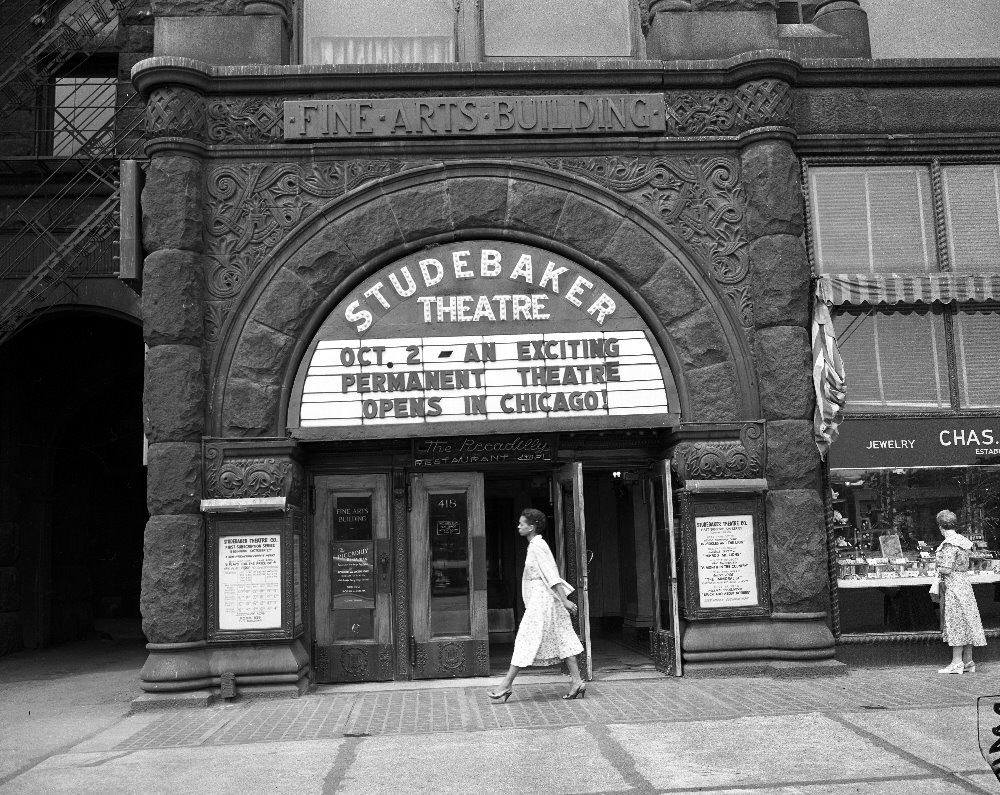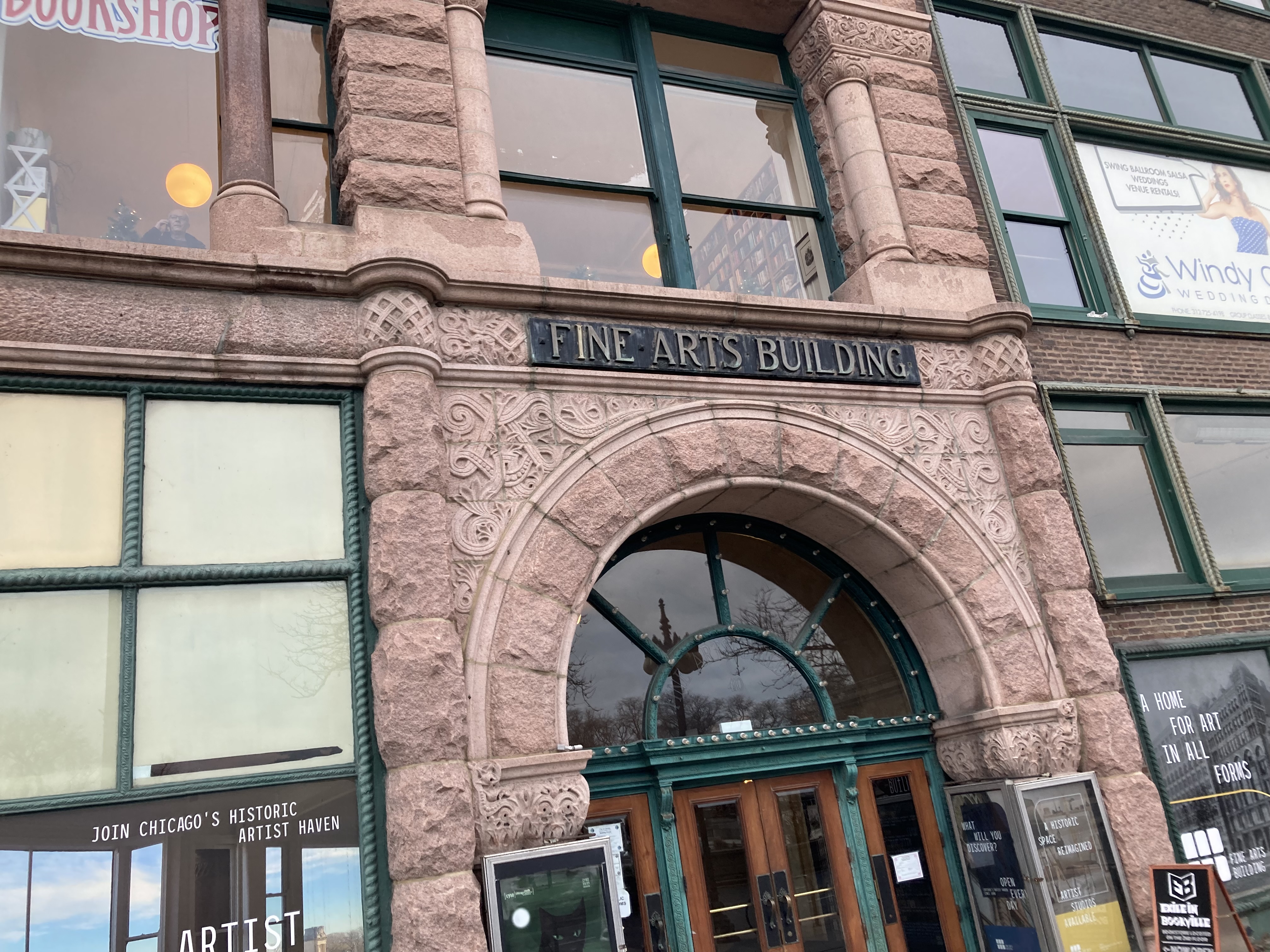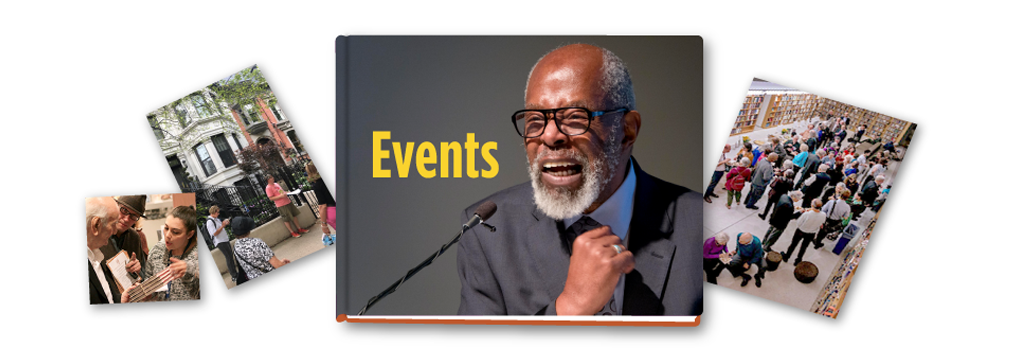Fine Arts Building

The Fine Arts Building in 1956. Image
courtesy of the Chicago History Musuem.
410 S. Michigan Ave.
The Studebaker Company constructed this Romanesque building in 1885 to showcase their horse-drawn carriages. This was 17 years before Studebaker would produce its first automobile. A few years later, the building underwent renovation, with the goal to gather “the artistic, social, and literary concerns of the city into a single building.” The structure became "the Fine Arts Building" in 1898. By the first years of the…
read moreThe Studebaker Company constructed this Romanesque building in 1885 to showcase their horse-drawn carriages. This was 17 years before Studebaker would produce its first automobile. A few years later, the building underwent renovation, with the goal to gather “the artistic, social, and literary concerns of the city into a single building.” The structure became "the Fine Arts Building" in 1898. By the first years of the 20th century, the Fine Arts Building was home to artist studios, theater companies, literary clubs, and more than ten thousand music students. Author Hamlin Garland and cartoonist John T. McCutcheon (both future Pulitzer Prize winners), as well as bestselling children’s writer L. Frank Baum and his Wizard of Oz illustrator William Denslow, were among the notable occupants. Anna Morgan, Grace Wilbur Trout, and Lorado Taft were also associated with the building that many historians considered the center of Chicago arts and culture at the turn of the century. Literary magazines The Dial, The Little Review, and Poetry were all based out of the building during their early years. Browne’s Bookstore, owned by The Dial editor Francis Fisher Browne, whose offices were also located on the seventh floor, lasted just five years. “All Chicago society came to Browne’s Bookstore,” Anderson wrote. “Here tea was served and everyone was very smart.” Frank Lloyd Wright designed the entire interior—the shelves, the windows, even the knickknacks. The windows were replicas of those in the children’s playroom of his Oak Park home. Wright worked out of Suite 1080 for a few months in 1908 and 1911.
According to Adam Morgan, writing in the March 22, 2018 The Paris Review, “Wright met Browne through the Caxton Club, a group of wealthy Chicagoans dedicated to publishing books in the Arts and Crafts style. Like everything else back then, the club was headquartered in the Fine Arts Building, a few floors above Browne’s offices for The Dial. Having designed book covers for the club’s special editions since 1898, Wright was invited to design Browne’s Bookstore.”
From 1912 to 1917, the Fine Arts Building housed the Chicago Little Theatre, which trained actors and produced contemporary plays in their 99-seat theater on the 4th floor. The short-lived group influenced the spread of little theaters throughout America and laid the foundation for Chicago’s thriving storefront theater culture. Anderson’s The Little Review, had its office in Room 917. At the end of the tenth floor hall was the home of the Rose Bindery, which operated between 1905 and 1913. Ralph Fletcher Seymour, designer and publisher, occupied 1025. In 1021, William Denslow worked on the drawings for L. Frank Baum’s Wizard of Oz books. The Little Room met in Ralph Clarkson studio following Friday afternoon Chicago Symphony Orchestra concerts. According to Harriet Monroe, they would meet to talk and have tea around a samovar, sometimes with a dash of rum to strengthen it and “every visitor who was anybody in any of arts would be brought to the Little Room by some local confrere.” Monroe's Poetry: A Magazine of Verse published out of Ralph Seymour’s 10th-floor studio from 1911-1915.
The Fine Arts Building currently houses artists' lofts, art galleries, theater, dance and recording studios, interior design firms, musical instrument makers, and other businesses associated with the arts. It also holds offices of the Daughters of the American Revolution, the Jazz Institute of Chicago, the Grant Park Conservancy, the World Federalist Association, the Chicago Youth Symphony, and the Boitsov Classical Ballet School and Company. The Fine Arts Building was designated a Chicago Landmark on June 7, 1978.

The Fine Arts Building, 2023.








